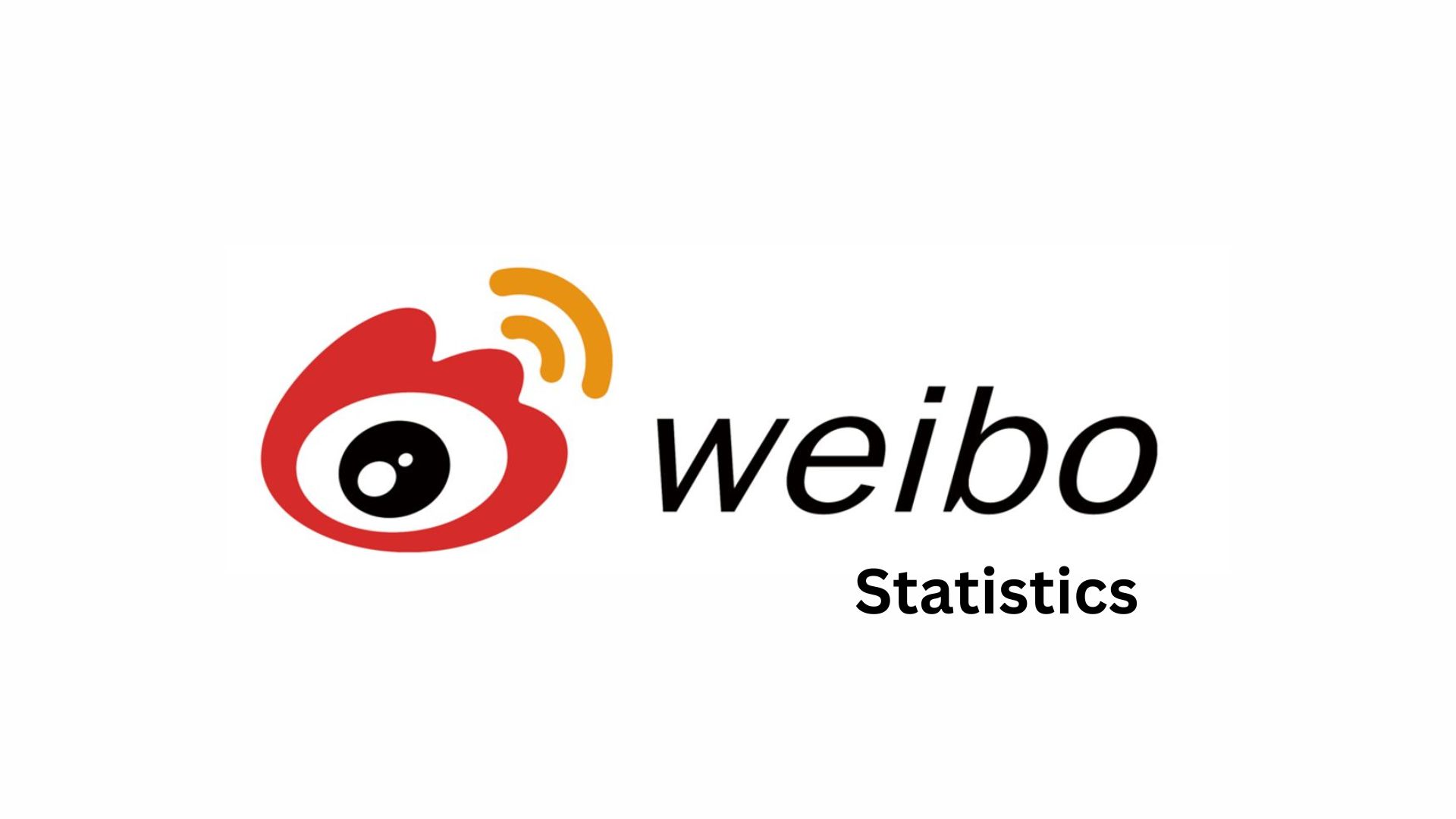edX Statistics By Website Traffic, Marketing Channels And Courses (2025)
Updated · Apr 30, 2025
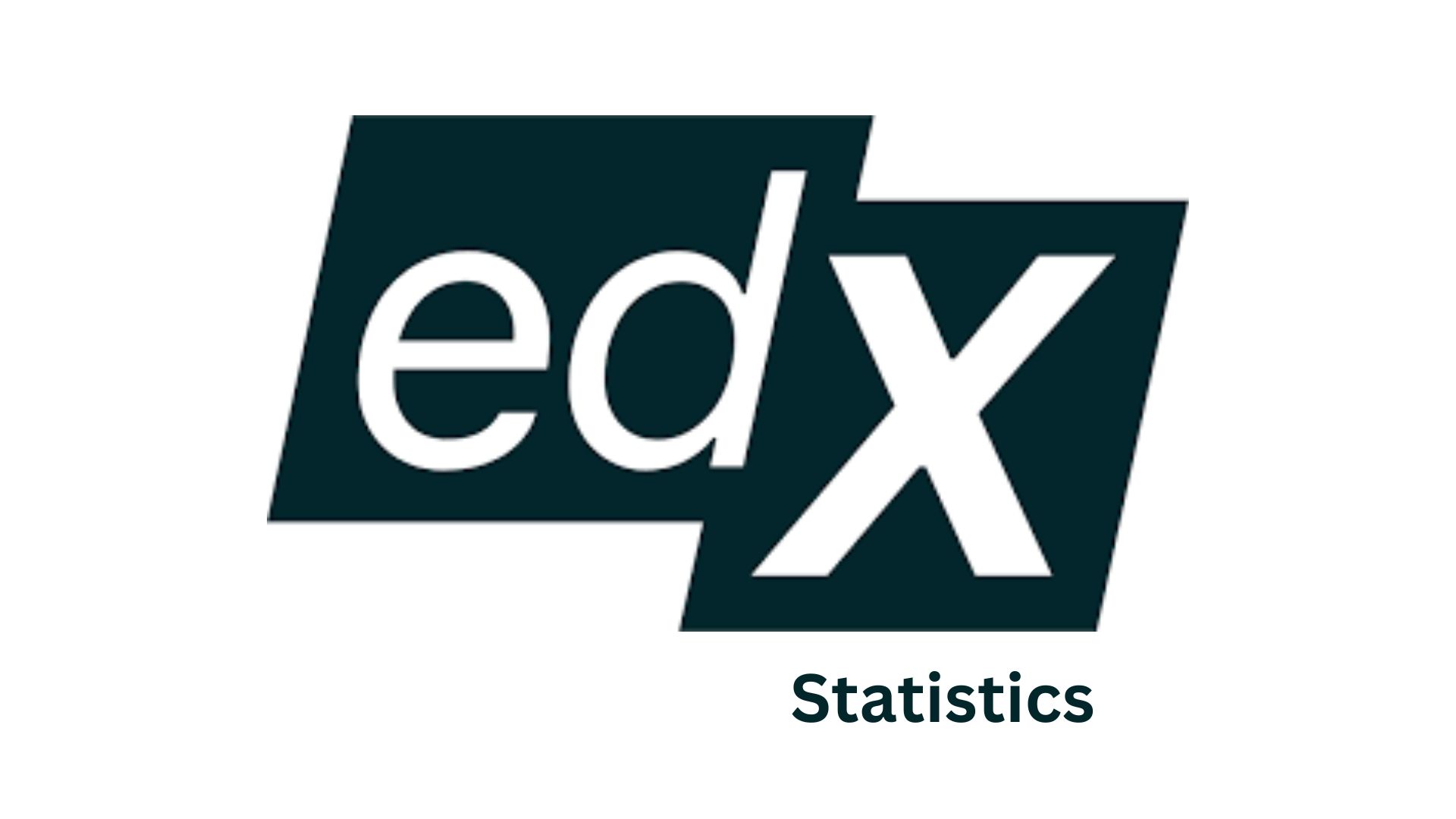
Table of Contents
Introduction
edX Statistics: In this digital era, online learning has developed into a powerful tool for education and career enhancement. Among many platforms in this regard, edX is a key provider of Massive Open Online Courses (MOOCs). Founded by Harvard University and MIT, edX grew in 2012 and has continued to do so by offering thousands of courses in various fields. In 2024, edX has achieved new milestones in terms of its users, revenue, partnerships, and courses.
This article shall look at the latest edX statistics concerning its influence on learners and the future of education.
Editor’s Choice
- According to edX statistics, edX revenue is US$210 million, with a vast growing portfolio of courses and degree programs.
- 19% of web traffic comes from the US, 8.58% from India, followed by 4.36% from Canada, 4.05% from Ethiopia, and 3.86% from the UK.
- Ethiopia showed the highest growth rate in edX traffic, with a gain of 678.3%.
- 76% of students in 2022 admitted that edx had given them education that would have otherwise been inaccessible to them.
- The first course put onto the platform, MIT Circuits and Electronics, had enrolled 155,000 learners, from 162 countries, and reached near 500,000 learners by 2019.
- Most courses are free to audit; certificates cost between US$100 and US$200.
- In 2015, edX began granting college credit for MOOCs and, to date, has issued 190,000 certificates.
- By 2022, the MicroMasters had been granted to 13,000 recipients, 92% of whom considered it to be worth their time.
- edX offers programs, MicroMasters, Professional Certificates, and MicroBachelors, which represent 25% and 50% of degree curricula.
- For Cybersecurity, the Georgia Institute of Technology currently offers the degree via edX for US$3,300 a year.
- Increased from one to 13 between 2017 and 2020, thus increasing the number of master’s degrees provided.
- The number of edX courses has increased by 240%, from 1,290 in 2016 to 3,090 in 2020.
- Around 700 new courses were launched in 2020, with the introduction of the “edX for Business” programs priced between US$999 and US$3,599.
- 80%, 50%, and 30% of edX for Business clients attended 1,000 companies, 100,000 learners, and 300,000 enrollments, respectively, by the end of the year 2020.
- As of April 2021, edX users had watched 39 million hours of video and awarded 2.1 million verified course certificates.
- edX reached 1 million learners in 2013, 35 million by the end of 2020, and about 41 million by 2022.
- Around 150,000 learners use edX daily.
- Of edX users, 48% are from the United States and 8% from India.
- 45% of edX’s corporate clients are large enterprises, and 40% have US$1 billion in revenue or more.
- Industries with the largest edX uptake comprise Higher Education (24%), Computer Software (16%), and Education Management (12%).
- Apart from those mentioned, edX is now said to have about 33 million users, putting it third in line in the EdTech space after Coursera with 82 million and Udemy with 50 million; it’s followed by LinkedIn Learning (24 million) and Pluralsight (17 million).
- In terms of gender, there is almost a level playing field at edX, with 49.14% who identify as female and 50.86% as male.
- The majority of edX users fall within the 25-34 age range (31.43%), trailed by the 18-24 age range (25.92%).
EdX Financial Performance
- edX statistics showed remarkable revenue growth in the year 2024, making around US$210 million, a jump of 17% from US$179 million in 2023. Its earnings came from many areas.
- Certificates and programs accounted for nearly 45% of total revenue, which is the largest amount approximately US$94.5 million.
- Another 30%, or about US$63 million, was generated from corporate training via the edX for Business offering.
- Degree programs contributed an additional 15% to the total of US$31.5 million, with sponsorships and partnerships contributing the last 10% and bringing in US$21 million. The typical price for a certificate course offered by edX is around US$150.
- edX statistics indicate that More advanced offerings, like professional certificate programs and MicroMasters programs, usually range from US$500 to US$1,500.
- However, edX still allows free access to most of its courses in audit tracks, which have a sizable number of possible users – around 55% – who tend up actually paying for a certificate or opting to enroll in a paid course, notwithstanding the application of their resources to improve income generation for the platform.
edX Website Traffic By Country
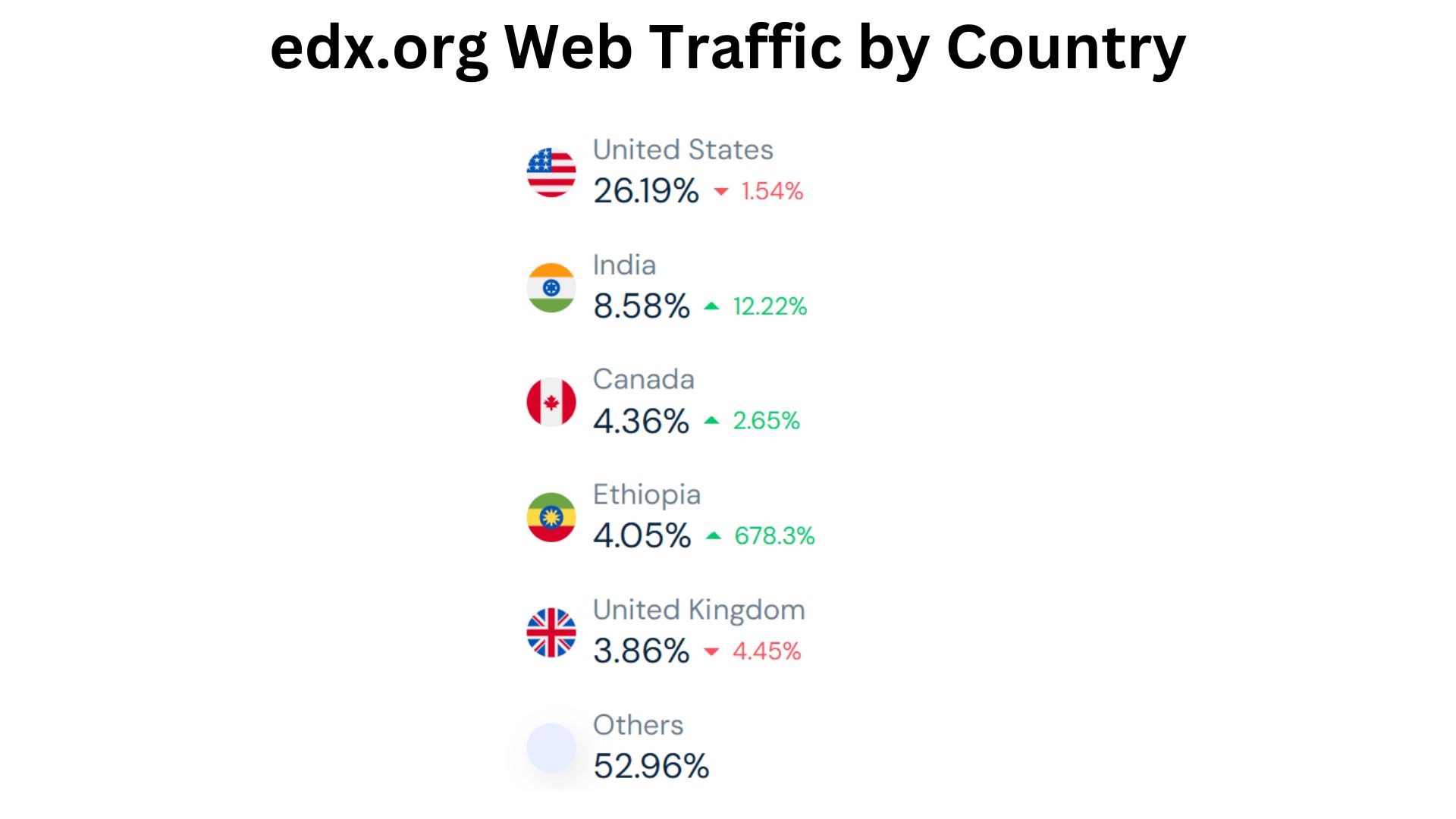
(Source: similarweb.com)
- The above edX statistics show the location as well as the change in traffic from the previous period for edX’s website.
- The most considerable share of it belongs to the United States, accounting for 26.19% of the entire edX website visitors.
- Its growth rate is quite low at 1.54%, suggesting that the U.S. remains the largest market, but traffic is relatively stable and not increasing fast.
- Following this is India, which contributes 8.58% to the overall traffic. Unlike the U.S., traffic from India is skyrocketing at 12.22%, with edX fast becoming a stronghold for Indian users.
- Canada is the next largest source of total visitors at 4.36%; however, it trails behind in terms of growth at a 2.65% increase, signifying a steady but slow rise in Canadian user engagement. Ethiopia offers a surprise; it comprises 4.05% of total traffic.
- If one goes purely by the headcount, it boasts an astonishing growth rate of 678.3%, an unbelievable spike compared to other countries.
- This is indicative of a sudden upsurge in interest in edX courses coming from Ethiopia for possibly new outreach efforts, university partnerships, or increased digital access.
- The United Kingdom provides 3.86% of traffic, with a fair growth of 4.45%, signalling a healthy and steady interest from users in the UK toward the future. Finally, traffic from all the other countries brings the total to 52.96%.
- This huge percentage suggests that edX has a very diverse international audience besides the already mentioned top five countries.
edX Courses
- According to edX statistics, 76% of respondents believed in a survey in 2022 that edX would connect them to education they otherwise would not have.
- When edX first started its very first course, Circuits and Electronics for MIT, 155,000 learners came from some 162 countries.
- MIT’s Impact Report of 2020 said it would take an MIT professor more than 35 years to reach that many students face-to-face. And by September 2019, that same course reached close to 500,000 learners, reflecting the very heavy scale that online education can afford.
- Most edX courses can be audited for free; however, many of them offer optional certificates of completion, usually for a cost of US$100 to US$200.
- By the end of 2022, about 13,000 MicroMasters had been earned, and 92% of graduates reported that the credential was worthwhile.
- MicroMasters programs usually represent 25-50% of a complete Master’s degree and cost a fraction of the price. Thus, these programs are popular for budget-friendly, flexible learning.
- An outstanding example is the degree of an online Master’s program in Cybersecurity of Georgia Institute of Technology: US$3,300 a year for an exceptionally prestigious degree at a very low price.
- The same period saw an increase in the number of courses from 1290 in 2017 to 3090 in 2020, with a growth of 240%.
- Artificial Intelligence courses were specifically in the spotlight as they had two slots within the top 10 courses of edX in the year 2020.
- As of April 2021, edX boasted a total of 39 million hours of consumption in video content by users of the platform, as well as 2,100,000 verified course certificates issued; all of these were testaments to the level of active engagement by learners with the content.
- Even among the trend of increasing students on the platform, edX had done well in 2013 by topping the mark of 1 million students enrolled on the platform, marking the beginning of a long journey towards its goal of a billion educations.
- By the end of 2020, around 35 million of the registered learners in edX had been recorded as having a total enrollment of 110 million.
- By the end of 2022, it grew to about 41 million learners.
- The edX statistics estimate is that every day, around 150,000 students access the materials of edX.
- Looking into the types of companies that use edX, about 20% of them are small companies, meaning less than 50 employees, 32% are medium-sized companies, and 45% are large with at least 1,000 employees.
- Among edX clients, 48% are found to be located in the United States, while 8% belong to India.
- Company size based on revenue shows that 39% of the customers belong to small businesses (earning below US$50 million), with 11% mid-sized, while 40% represent large corporations (earning more than US$1 billion every year).
- In terms of industry, Higher Education accounts for the highest proportion of edX’s corporate clients (24%), followed by Computer Software (16%) and Education Management (12%), evidencing the strong presence of edX in the academic and tech sectors.
Leading Edtech Platforms By Registered Users
- In 2023, there was rapid growth in Education Technology, with several key platforms leading the way by numbers.
- edX statistics reveal that the leader was Coursera, with 82 million registered users, demonstrating its central role in providing the best online courses from universities and companies all around the world.
- Next after Coursera was Udemy, which became the largest platform by attracting 50 million registered users, mainly drawing learners with its huge catalogue of professional and personal development courses designed by independent instructors. edX came in third position with 33 million registered users, maintaining a strong mark on university-level courses and microcredentials.
- LinkedIn Learning had 24 million registered users who benefited from its association with the social networking site LinkedIn in providing career-oriented courses.
- Finally, Pluralsight, which specializes in tech and software development training, has 17 million registered users.
- This edX statistics ranking shows that platforms concentrating on both academic learning and professional skills are doing well in the online learning arena.
edX Demographics
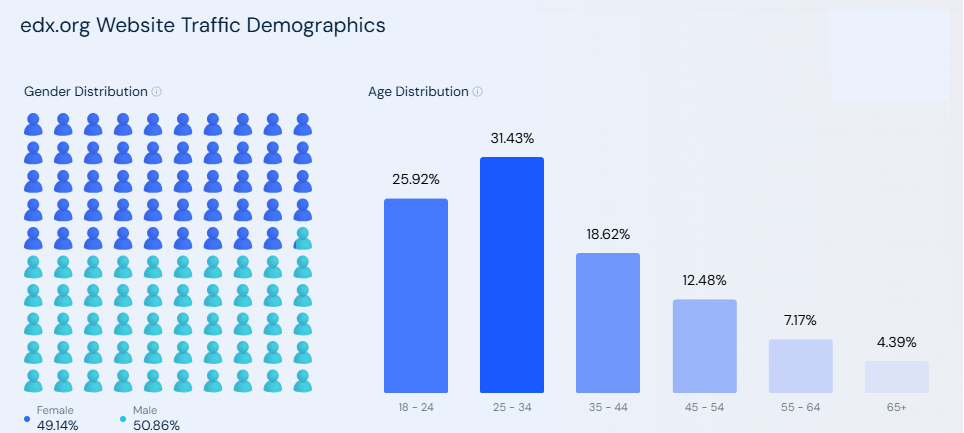
(Source: similarweb.com)
- EdX statistics indicate that there is a fairly balanced gender distribution among edX users. Female learners account for 49.14% while male learners account for 50.86%, indicating almost equal development appeal for both genders.
- Concerning age distribution, the biggest group of edX users is between 25-34, accounting for 31.43% of the entire user base.
- The second biggest group is 18-24 years, accounting for 25.92%. This shows high engagement from college-age individuals and early-career ones.
- Age group 35-44 is next, making up 18.62%. Meanwhile, those 45-54 account for 12.48%. Age group 55-64 makes up 7.17%, while the other group of 65 years and over accounts for 4.39%.
- This classification states that young adults are the majority users of edX, while middle-aged and older learners interested in lifelong education and reskilling are also interesting subpopulations.
edX Marketing Channels
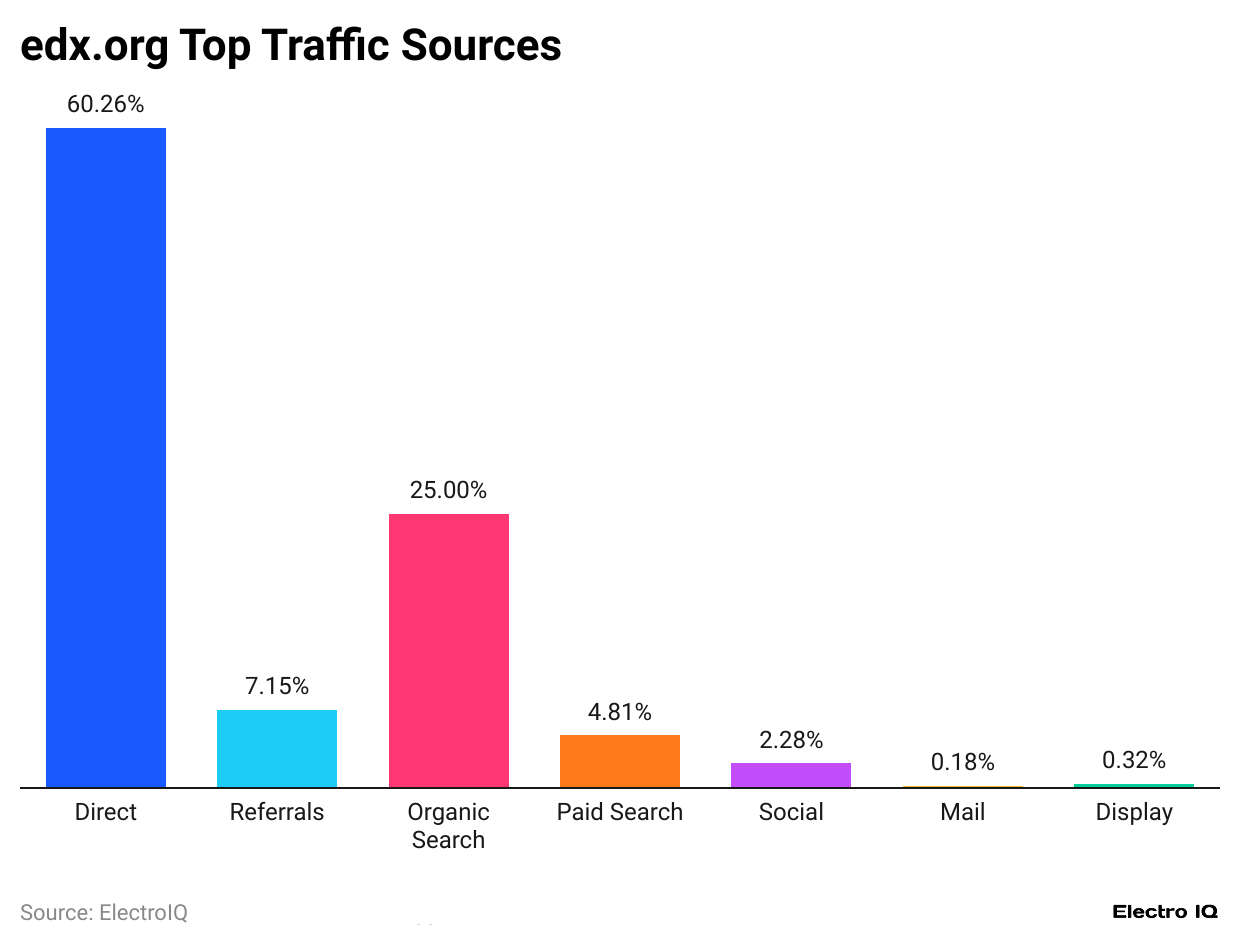
(Reference: similarweb.com)
- The majority of edX’s attraction comes from its visitors, with a whopping 60.26% being those who enter the URL directly or bookmark it; this shows the presence of a strong brand recognition and loyalty factor among the users.
- The next important channel is organic search, yielding 25% of the traffic.
- This means that a sizable number-25%-of the users come to know about edX from unpaid search engine results, thereby showing strong search visibility and interest in the online education domain. Referrals constitute 7.15% of traffic, meaning other websites mention and link to EDX, and thereby send visitors to its site.
- Paid search advertisement generates 4.81%, meaning it is only moderately effective on Google Ads and such platforms to attract learners.
- Social media-generating traffic is only at 2.28%, which suggests that while edX does have a social media presence, it is not the main driver for traffic. Email marketing (0.18%) and display ads across sites contribute negligibly.
- The marketing contributes a further 0.32% of the total traffic.
- The edX statistics data presented therefore illustrates most edX users are those already familiar with the edX platform or finding it mostly through organic search; paid advertising or social media promotions rarely influence them.
Conclusion
2024 has seen edX cementing its position as a global leader in online education. edX statistics indicate that with over 95 million users, US$210 million in revenue, and a growing course and degree program portfolio, edX continues with its endeavour to make learning accessible and affordable across the globe.
Focus on micro-credentials, corporate partnerships, and mobile-friendly learning has further established edX’s niche within an increasingly competitive market. With the pace of technology and rising interest from learners for flexible education options, an exciting future lies before edX.
FAQ.
The global user base of edX is huge, and the countries contributing the most traffic are mainly those stated above. All estimated and taken together, in 2022, edX had roughly 41 million registered learners. The United States is at the forefront with 26.19% of the website traffic, followed by India (8.58%), Canada (4.36%), Ethiopia (4.05%), and the United Kingdom (3.86%); most excitingly, Ethiopia has undergone massive traffic growth of 678.3%.
edX offers a range of learning options, including free courses to audit, paid certificates (typically US$100-US$200), MicroMasters, Professional Certificates, MicroBachelors, and full online Master’s degrees. Generally, MicroMasters programs will cover 25%-50% of a Master’s degree curriculum.
Around 60.26% of edX’s web traffic is the result of direct visits. This shows very strong brand recognition. Organic search makes up 25% of visitors, with referrals accounting for another 7.15%. Paid search ads take up 4.81%. Social media and email marketing account for a lesser share.
edX users are almost evenly split by gender: 49.14% are female, 50.86% are male. The largest age group is 25-34 years (31.43%), followed by 18-24-year-olds (25.92%), showing great appeal to young professionals and students.
From 2017 to 2020, edX grew from 1 to 13 in its Master’s programs and has had an increase from 1,290 courses to 3,090 courses in its course catalog; this is an increase of 240%. The introduction of edX for Business offers professional development programs priced at US$999-US$3,599 and provides services to 1,000 companies.

Maitrayee Dey has a background in Electrical Engineering and has worked in various technical roles before transitioning to writing. Specializing in technology and Artificial Intelligence, she has served as an Academic Research Analyst and Freelance Writer, particularly focusing on education and healthcare in Australia. Maitrayee's lifelong passions for writing and painting led her to pursue a full-time writing career. She is also the creator of a cooking YouTube channel, where she shares her culinary adventures. At Smartphone Thoughts, Maitrayee brings her expertise in technology to provide in-depth smartphone reviews and app-related statistics, making complex topics easy to understand for all readers.







